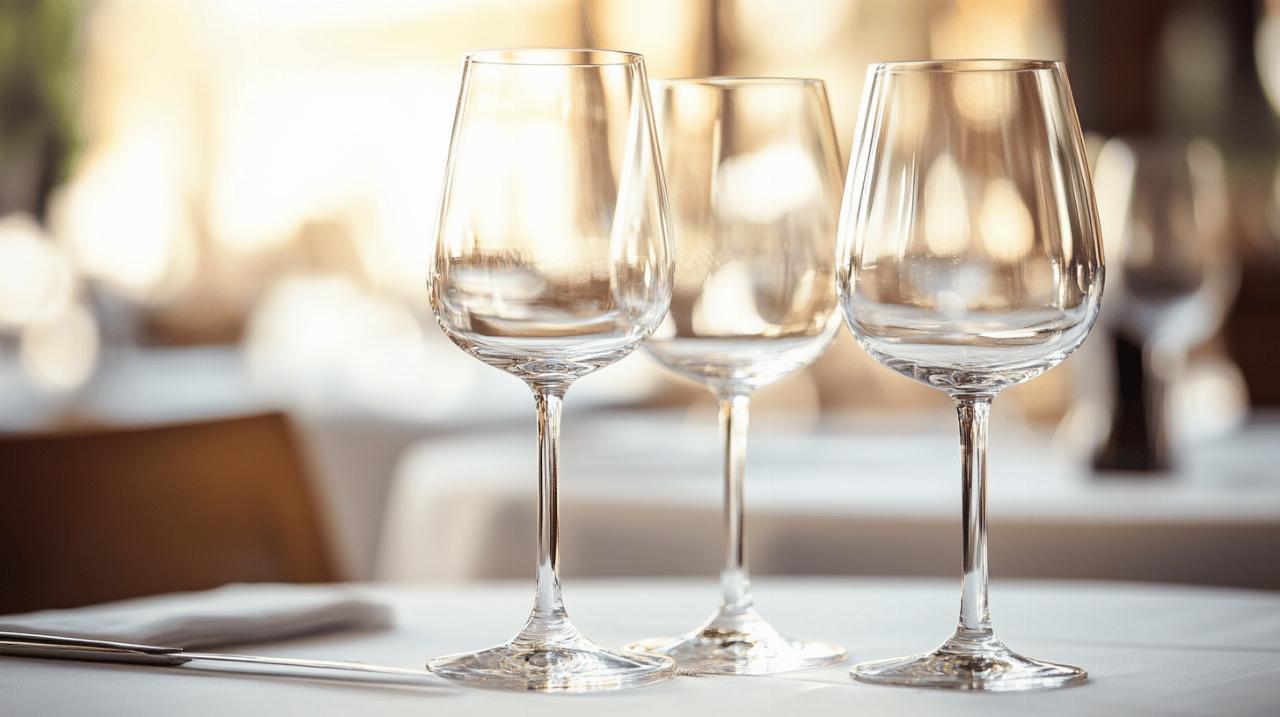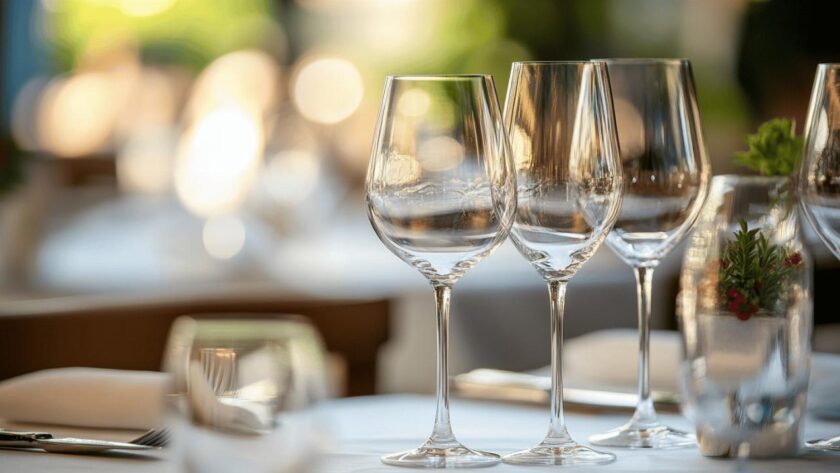When it comes to selecting the perfect vessels for your favourite beverages, understanding the nuances between crystal and glass can transform not only your drinking experience but also how you appreciate the craftsmanship behind each piece. Whether you are hosting an elegant dinner party or simply enjoying a quiet evening at home, knowing what distinguishes these two materials will guide you towards making informed decisions that suit both your aesthetic preferences and practical needs.
Understanding the Fundamental Composition: What Sets Crystal Apart from Glass
The chemical make-up: lead oxide and mineral content explained
The primary distinction between crystal and glass lies in their composition. Ordinary glass is crafted from a straightforward mixture of sand, soda ash, and limestone, resulting in a functional and affordable material suitable for everyday use. Crystal, on the other hand, is a refined type of glass that incorporates minerals such as lead oxide or other metal oxides into its structure. In the United Kingdom, for a product to be labelled as crystal, it must contain at least 24% mineral content, a standard that ensures the material possesses the desired qualities of clarity and strength. The European Union sets similar benchmarks, requiring lead crystal to have a minimum of 24% lead oxide, a density exceeding 2.90, and a reflective index of 1.545. These stringent criteria guarantee that crystal not only looks exquisite but also performs exceptionally well in terms of light refraction and durability. The inclusion of lead oxide is particularly significant because it enhances the refractive index of the material, allowing crystal to sparkle with a brilliance that standard glass simply cannot match. This sparkle appearance is one of the most recognisable features of crystal glassware and contributes greatly to its appeal. Some manufacturers produce lead-free crystal by substituting lead oxide with alternative metal oxides, offering a safer option for those concerned about lead leaching while still maintaining much of the aesthetic charm associated with traditional crystal. The mineral content not only affects the visual properties but also the physical characteristics, making crystal denser and heavier than its glass counterpart. This added weight gives crystal a substantial feel in the hand, often associated with luxury and quality. The porous nature of certain crystal varieties means they can absorb odours or flavours over time, which is why they are not recommended for long-term storage of acidic liquids or alcoholic beverages. Glass, being non-porous, does not share this vulnerability and remains a practical choice for everyday drinking needs.
Manufacturing processes: traditional craftsmanship versus modern production
The methods used to produce crystal and glass differ significantly, reflecting the varying levels of artistry and precision involved. Glass production is typically a more standardised, industrialised process, allowing for mass production at a lower cost. This efficiency makes glass wine glasses and other glassware widely accessible and affordable for the general consumer. Crystal, by contrast, often involves traditional craftsmanship where skilled artisans meticulously shape and refine each piece. The addition of lead oxide or other minerals to the molten mixture requires careful control of temperature and timing to achieve the desired clarity and strength. Because crystal can be cut more finely than glass, artisans are able to create intricate designs, engravings, and patterns that elevate the aesthetic value of the finished product. This ability to engrave and cut with precision is one reason why crystal is favoured for special occasions and formal settings. The thinness achievable with crystal also enhances the drinking experience, particularly with wine, as a thinner rim allows the beverage to flow more smoothly onto the palate, releasing aromatic compounds and enriching the overall tasting experience. Manufacturers such as Waterford Crystal exemplify this tradition, producing pieces that contain approximately 32% lead, ensuring exceptional brilliance and resonance. The care and attention invested in crystal production translate into a product that is not only visually stunning but also a testament to the enduring value of handcrafted artistry.
Aesthetic and Practical Distinctions: Recognising Quality Through Clarity and Weight
Visual Characteristics: Brilliance, Refraction, and the Play of Light
One of the most captivating aspects of crystal is its superior ability to refract light, creating a dazzling display that captures the eye and enhances any table setting. When light passes through crystal, the higher refractive index causes it to bend and scatter in a way that produces a prism effect, casting colourful reflections and a sparkling appearance that is unmistakable. This quality is particularly noticeable when you hold a crystal glass up to natural or artificial light, where the play of light reveals the depth and clarity of the material. Glass, while transparent and functional, lacks this level of brilliance because its refractive index is lower, resulting in a more subdued interaction with light. The transparency of both materials is important for appreciating the colour and texture of the beverages they hold, yet crystal takes this a step further by adding an element of visual drama to the experience. Testing for crystal can be as simple as observing how light behaves when passed through the vessel. A UV light test can reveal further differences, as crystal will often exhibit purple and blue hues under ultraviolet illumination, a phenomenon not typically seen in ordinary glass. The clarity achieved in crystal production is a result of the meticulous removal of impurities and the careful balance of minerals, ensuring that each piece meets the high standards expected of premium glassware. The sparkle and brilliance of crystal are not merely decorative; they enhance the overall presentation of your drink, making even a simple glass of water appear more refined and inviting. This aesthetic appeal is one reason why crystal is often chosen for champagne glasses, cocktail glasses, and other vessels intended for celebratory or formal occasions.
Tactile differences: assessing weight, resonance, and rim thickness
Beyond visual splendour, the tactile qualities of crystal set it apart from glass in ways that are immediately perceptible to anyone who handles these vessels. Crystal is notably heavier than glass due to its higher density, a characteristic that conveys a sense of substance and quality. When you lift a crystal glass, the weight feels reassuring and luxurious, a stark contrast to the lighter, sometimes almost fragile feel of standard glass. This difference in weight is directly related to the mineral content and the manufacturing process, which together create a material that is both robust and elegant. Another distinctive feature of crystal is the sound it produces when tapped. A gentle tap on the rim or side of a crystal glass will elicit a clear, resonating ping or a prolonged bell-like tone, often described as a musical sound that can linger for several seconds. This resonance is a hallmark of quality crystal and is caused by the material's molecular structure, which allows vibrations to travel more freely. In contrast, tapping glass results in a short, dull thud that fades almost immediately, lacking the melodic quality of crystal. The rim thickness is yet another area where these materials diverge. Crystal can be fashioned with a much thinner rim than glass, a detail that significantly enhances the drinking experience. A thinner rim allows the liquid to flow more smoothly onto the tongue, which is particularly important for wine enthusiasts who seek to maximise aromatic release and flavour perception. Glass wine glasses, while practical and durable, typically have thicker rims that can interfere with the delicate interplay of aroma and taste. The cuts and engravings on crystal also tend to be rounder and more refined compared to the etched designs on glass, further underscoring the craftsmanship involved in crystal production. These tactile and auditory cues are not just markers of quality; they contribute to the overall sensory experience of using crystal glassware, making each toast or sip a moment of understated elegance.
Durability and care considerations: maintaining your glassware collection
Fragility factors: chip resistance and longevity across different materials
 While crystal is celebrated for its beauty and refinement, it is also more fragile than glass, a trade-off that comes with its delicate construction. The thinner walls and rims that make crystal so appealing also render it more susceptible to chipping and breakability. This fragility means that crystal glassware requires careful handling and storage to preserve its integrity over time. Glass, particularly high-quality variants such as borosilicate glass, offers greater chip resistance and is less prone to damage from everyday use. Borosilicate glass is a durable, high-end option that combines the practical benefits of standard glass with enhanced heat resistance and strength, making it an excellent choice for those who prioritise longevity and resilience. The porous nature of some crystal types can also affect their lifespan, as repeated exposure to acidic liquids or prolonged contact with alcoholic beverages may lead to lead leaching, which compromises both the safety and the appearance of the glass. For this reason, crystal is best suited for serving and pouring rather than long-term beverage storage. Glass, being non-porous, does not absorb flavours or odours and is therefore more forgiving when used for a variety of drinks over extended periods. The choice between crystal and glass often comes down to lifestyle considerations: if you value the aesthetic and sensory qualities of crystal and are willing to invest the time in proper care, it can be a treasured addition to your collection. However, if practicality and durability are your primary concerns, glass may prove to be the more suitable option for daily use.
While crystal is celebrated for its beauty and refinement, it is also more fragile than glass, a trade-off that comes with its delicate construction. The thinner walls and rims that make crystal so appealing also render it more susceptible to chipping and breakability. This fragility means that crystal glassware requires careful handling and storage to preserve its integrity over time. Glass, particularly high-quality variants such as borosilicate glass, offers greater chip resistance and is less prone to damage from everyday use. Borosilicate glass is a durable, high-end option that combines the practical benefits of standard glass with enhanced heat resistance and strength, making it an excellent choice for those who prioritise longevity and resilience. The porous nature of some crystal types can also affect their lifespan, as repeated exposure to acidic liquids or prolonged contact with alcoholic beverages may lead to lead leaching, which compromises both the safety and the appearance of the glass. For this reason, crystal is best suited for serving and pouring rather than long-term beverage storage. Glass, being non-porous, does not absorb flavours or odours and is therefore more forgiving when used for a variety of drinks over extended periods. The choice between crystal and glass often comes down to lifestyle considerations: if you value the aesthetic and sensory qualities of crystal and are willing to invest the time in proper care, it can be a treasured addition to your collection. However, if practicality and durability are your primary concerns, glass may prove to be the more suitable option for daily use.
Proper Cleaning and Storage: Preserving the Integrity of Your Vessels
Maintaining the beauty and functionality of your glassware requires attention to proper cleaning and storage techniques, particularly when dealing with delicate crystal. Crystal glassware should always be washed by hand with warm soapy water, as the harsh detergents and high temperatures of a dishwasher can damage the material and dull its sparkle. Avoiding sudden temperature changes is crucial when washing crystal, as rapid shifts can cause the material to crack or become clouded. After washing, it is advisable to dry and store glasses upright to protect the fine rims from accidental chipping or bending. Glass, being more robust and typically dishwasher safe, offers greater convenience in terms of cleaning. The non-porous surface of glass means it does not retain residues or odours, making it easier to maintain over time. For those who own a mix of crystal and glass vessels, it is important to handle each type according to its specific care requirements to ensure longevity. Proper storage involves keeping your glassware in a location where it is protected from knocks and impacts, ideally in a cabinet with individual slots or cushioned dividers. Upright storage is particularly important for crystal, as it minimises stress on the delicate rims and reduces the risk of breakage. Temperature control is another consideration, especially for crystal used to serve wine or other temperature-sensitive beverages. Sudden exposure to extreme heat or cold can compromise the structural integrity of the glass, so it is wise to allow your glassware to adjust gradually to room temperature before filling. By adhering to these care practices, you can preserve the clarity, resonance, and overall quality of your collection, ensuring that each piece continues to enhance your drinking experience for years to come.
Making the Right Choice: Selecting Glassware for Different Occasions and Budgets
Everyday Versus Special Occasion: Matching Your Drinkware to the Moment
The decision to use crystal or glass often hinges on the nature of the occasion and the experience you wish to create. For everyday use, glass wine glasses and other standard glassware offer a practical, affordable solution that can withstand the rigours of daily life. Their dishwasher safe properties and greater chip resistance make them ideal for casual dining, family gatherings, and routine entertaining where convenience is paramount. Glass is also versatile, available in a variety of styles including highball, Collins, rocks, and coupe glasses, each designed to enhance the presentation and enjoyment of different beverages. On the other hand, crystal glassware is best reserved for special occasions when you want to elevate the experience and impress your guests. The brilliance, weight, and resonance of crystal add a touch of sophistication to formal dinners, celebrations, and intimate gatherings where attention to detail matters. The thinner rim and superior clarity of crystal wine glasses, champagne glasses, whiskey glasses, and gin glasses all contribute to a refined tasting experience that can transform an ordinary moment into something memorable. The investment value of crystal is not merely financial; it lies in the emotional and aesthetic pleasure derived from using finely crafted objects that have been designed with care and precision. By matching your drinkware to the moment, you ensure that each occasion is appropriately celebrated, whether it calls for the practicality of glass or the luxury of crystal.
Investment value: weighing cost against quality and longevity
When considering the investment in glassware, it is essential to weigh the initial cost against the quality, longevity, and overall value each material offers. Crystal is generally more expensive than glass, reflecting the higher mineral content, the skilled craftsmanship involved in its production, and the superior aesthetic qualities it delivers. For those who appreciate the finer things and are willing to invest in pieces that will be cherished and possibly passed down through generations, crystal represents a worthwhile expenditure. The durability of crystal, while requiring careful handling, is enhanced by the strength imparted by its mineral composition, allowing for thinner yet resilient designs that improve the drinking experience. Glass, particularly high-quality borosilicate glass, offers excellent value for those seeking durability without the premium price tag. Its heat resistance, non-porous nature, and resistance to chipping make it a practical choice that can serve you well over many years. Pricing considerations also extend to maintenance, as the care required for crystal may add to the overall cost of ownership in terms of time and effort. However, the beauty and prestige of crystal glassware can justify this investment for those who prioritise presentation enhancement and the aromatic release that comes with finely crafted rims. Ultimately, the right choice depends on your lifestyle, budget, and the value you place on the sensory and visual aspects of your drinking experience. By understanding the differences between crystal and glass, you are better equipped to make a selection that aligns with your personal preferences and enhances every moment, whether it is a quiet evening or a grand celebration.


